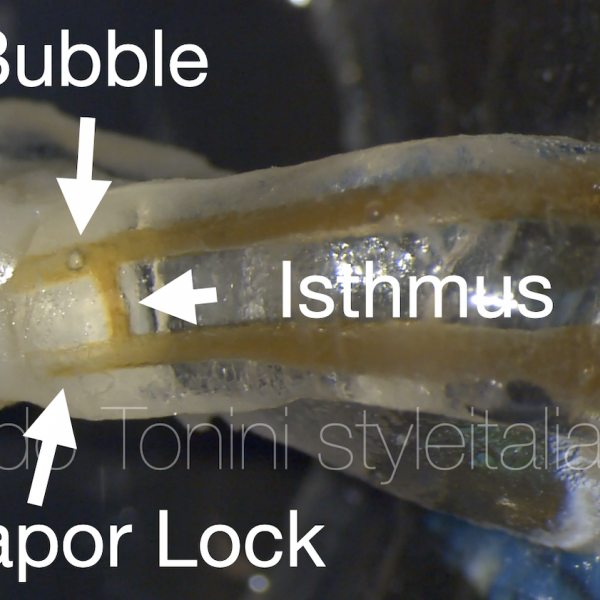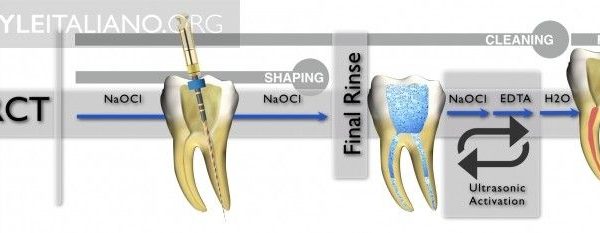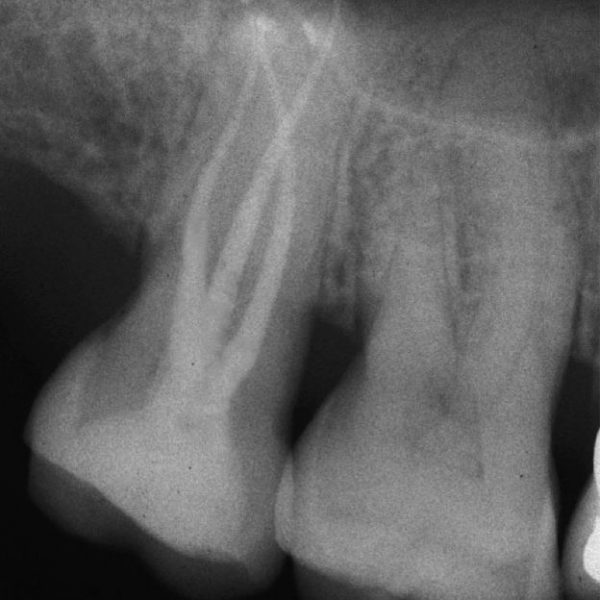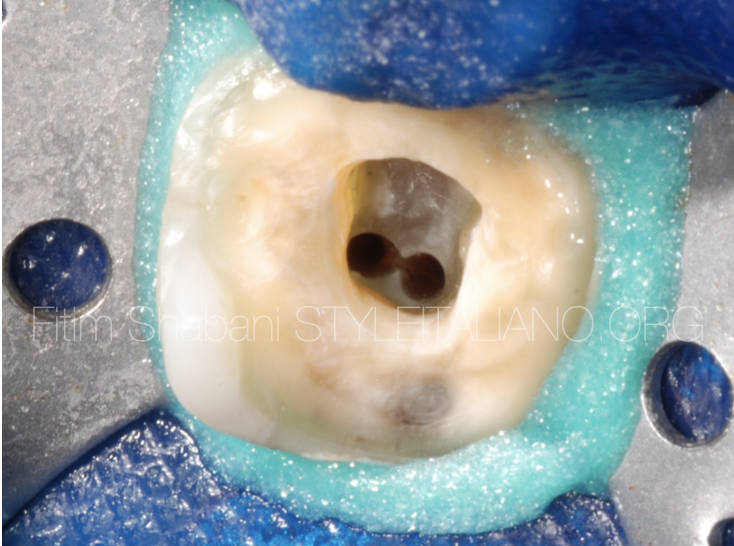
The importance of activation of irrigation in Endodontics
30/12/2021
Fitim Shabani
Warning: Undefined variable $post in /var/www/vhosts/styleitaliano-endodontics.org/endodontics.styleitaliano.org/wp-content/plugins/oxygen/component-framework/components/classes/code-block.class.php(133) : eval()'d code on line 2
Warning: Attempt to read property "ID" on null in /var/www/vhosts/styleitaliano-endodontics.org/endodontics.styleitaliano.org/wp-content/plugins/oxygen/component-framework/components/classes/code-block.class.php(133) : eval()'d code on line 2
The lower first right molar diagnosed with acute irreversible pulpitis.
In this case we want to show the importance of activation of irrigation in Endodontics.
Among the many activation methods here we have used the sonic activation method using sodium hypochlorite 2.5% with sonic activation.
At the end the tooth was restored with an Endocrown using the CAD/CAM technology.

Fig. 1
Clinical case
Clinical data
The first lower right molar
Dg: Acute pulpitis irrevresible
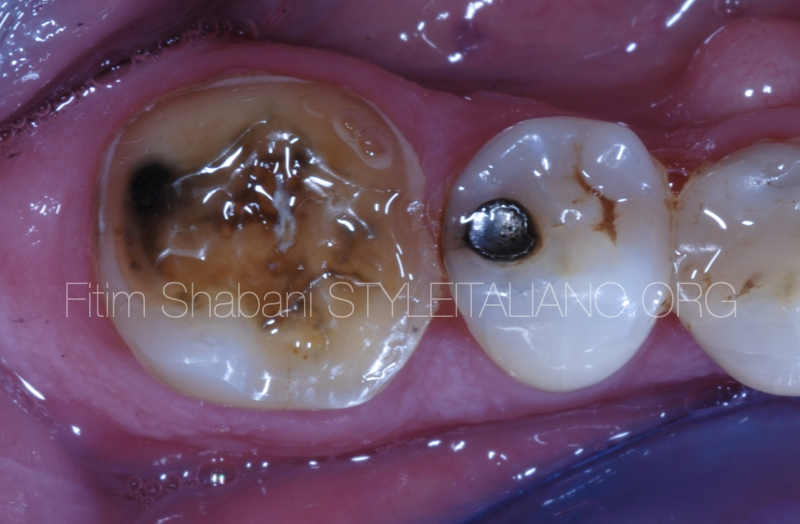
Fig. 2
Initial situation.
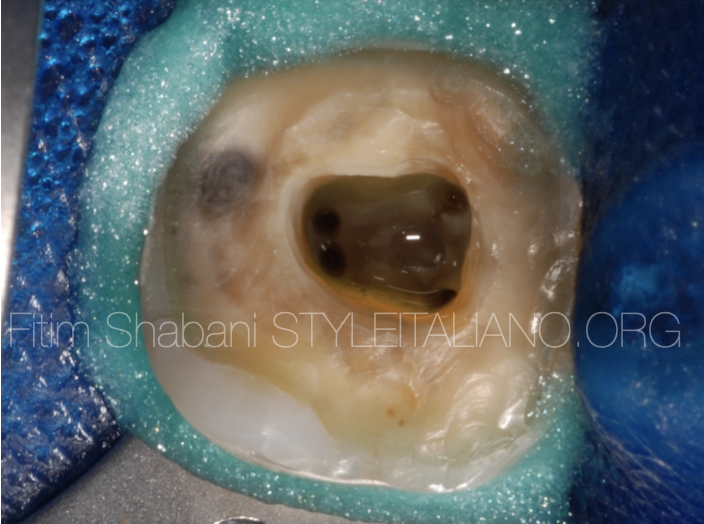
Fig. 3
Root canal treatment
cleaning and activation of the irrigant
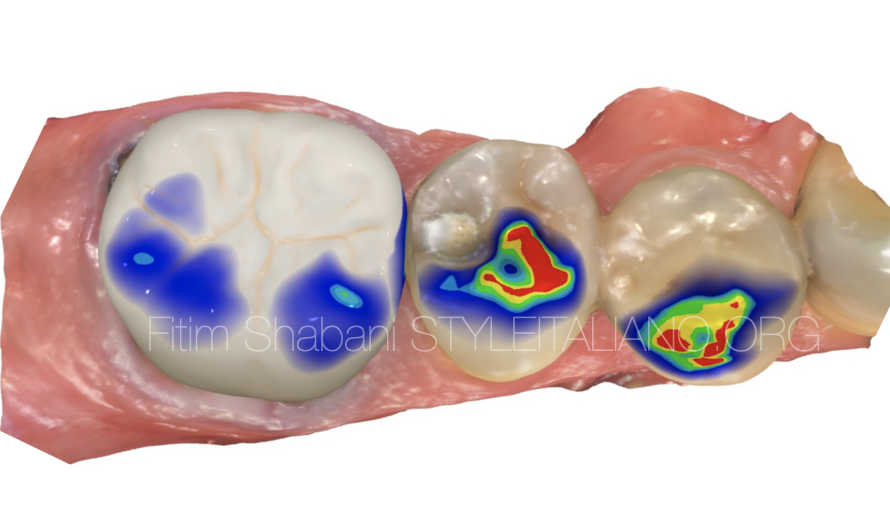
Fig. 4
Endocrown with CAD/CAM technology

Fig. 5
Endocrown after cementation

Fig. 6
Final X-ray
Conclusions
The long-term success of endodontic treatment is closely linked to adequate cleansing of the endodontic space after root canal shaping, and then proceed to a complete obturation of the complex root canal system
The final goal as well as the long-term prognosis of endodontic treatments depends on how much we have cleaned the endoodntic spaces, therefore irrigation and activation are one of the most important steps in endodontic treatments.
Bibliography
S. Paduano, R. Uomo, M. Amato, F. Riccitiello, M. Simeone, R. Valletta Cyst-like periapical lesion healing in an orthodontic patient: a case report with five-year follow-up. G Ital Endod, 27 (2) (2013), pp. 95-104
M. Silvani, E. Brambilla, A. Cerutti, M. Amato, M. GaglianiRoot canal treatment quality in undergraduate program: a preliminar report on NiTi reciprocating files. G Ital Endod, 27 (2013)
G. Ametrano, F. Riccitiello, M. Amato, A. Formisano, M. Muto, R. Grassi, et al.μCT analysis of mandibular molars before and after instrumentation by Reciproc files Recent Prog Med, 104 (2013)
Ghassan Yared, Ghada Al Asmar Ramli, Antibacterial Ability of Sodium Hypochlorite Heated in the Canals of Infected Teeth: An Ex Vivo Study, Feb 2020.
K. Urban, D. Donnermeyer, Edgar Schäfer, S. Bürklein Canal cleanliness using different irrigation activation systems: a SEM evaluation, 09 Feb 2017.


